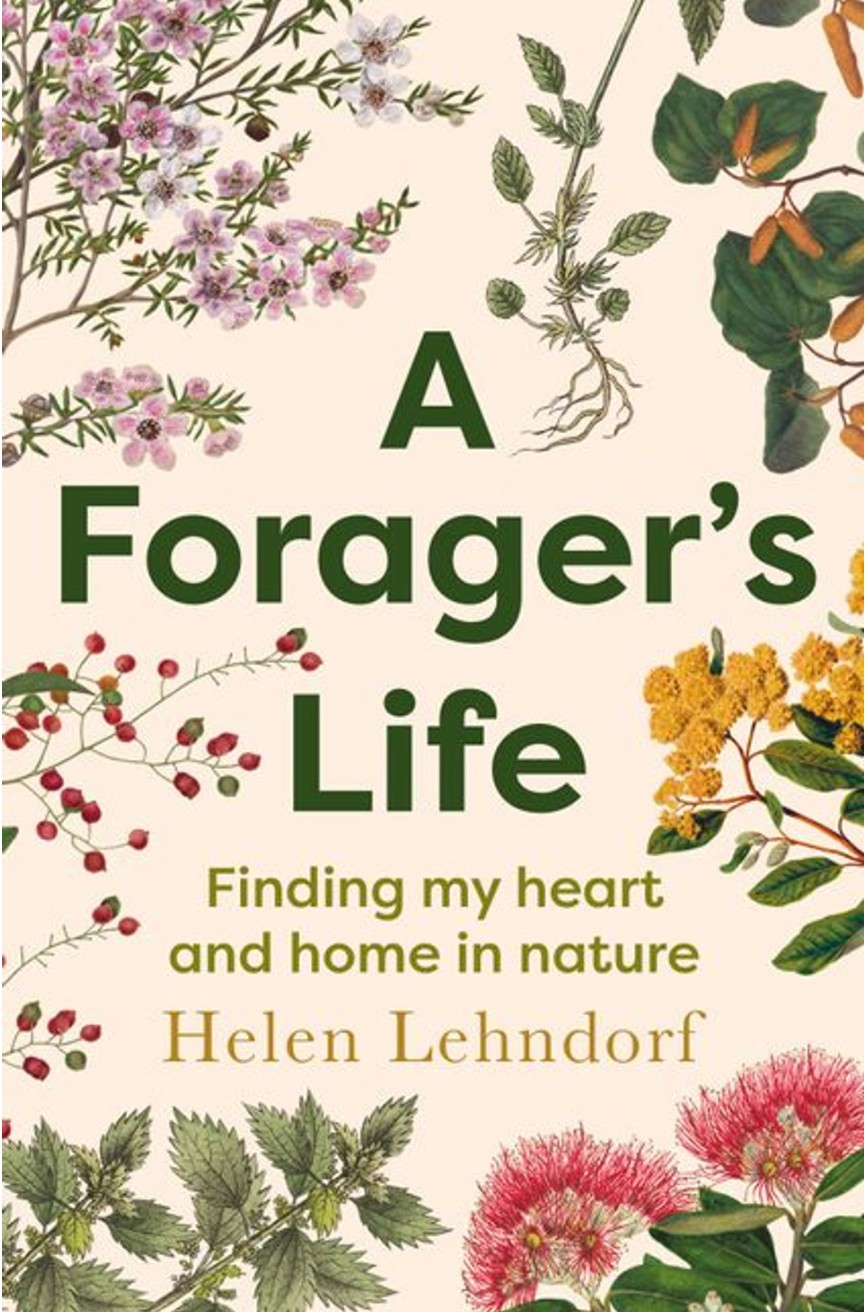BOOK REVIEW
A Forager’s Life: Finding my heart and home in nature by Helen Lehndorf

Title: A Forager’s Life Finding my heart and home in nature
Author: Helen Lehndorf
Illustrator:
Translator:
Publisher: HarperCollins
ISBN:
978 1 7755 4220 9 (pbk)
978 1 7754 9251 1 (e book)
RRP: Paperback $39.95, e book $15.99
Format: paperback, e-book
Date of Publication: March, 2023
Ages: Adult mostly, young adult less so
Themes: Connections with the natural world, Pākeha identity, community development, activism, parenting, gardening, harvesting, recipes, permaculture, autism spectrum, ecocriticism, NZ history
Wild plants and ‘weeds’ structure this delightful autobiography-recipe book-permaculture philosophy-social commentary by poet, punk, forager, parent, activist, community builder, and even English teacher, Helen Lehndorf. I am not sure how many young adults would relate to it, but it has sound advice for tired humans of all ages. It could also be a refreshing read for Scholarship English students working on indigeneity, societal change or ecocriticism.
The book is divided into three. “Seeds + Roots” covers growing up in a small, close freezing-works town in 1970s Taranaki, then alienation and love at university. ”Shoots and Blooms” is set in the UK where the young couple enthusiastically joined protests, and she delighted in the countryside lore, then back to the Manawatū, with two children, one of whom is on the autism spectrum. “Harvest and Compost” brings out still more deeply her passionate conviction of the importance of connection to the natural world, as her children grow and as she creates a community through foraging and sharing. At the end of each of the 20 chapters are various recipes based mostly on foraged foods.
For Lehndorf, nature’s nurture is not to be contained or controlled but relished and shared. She writes of a man telling her sons not to pick unripe strawberries in a community garden, “The earth is our shared playground, yet someone will always claim to own it to the exclusion of others … The community garden strawberries were meant for the hands and mouths of small children, red beads on the thread of connected life.” She remembers in beautiful detail her own childhood: “We had chewed on onion-weed stems and fennel seeds, nibbled gorse flowers, licked rainwater off leaves, sucked at the trumpets of orange honeysuckle flowers for a small hit of nectar. Discovering through wild eating, taking the world in.”
I had just finished reading Robin Wall Kimmerer’s marvellous books Braiding Sweetgrass and Gathering Moss before reading Lehndorf’s book. Wall Kimmerer is a Botany Professor, specialising in mosses, and “ an enrolled member of the Citizen Potawatomi Nation’. What these two authors have in common is the understanding of wild plants as kin, as friends, as comforters. In this world view, Wall Kimmerer brings her First Nation wisdom to her scientific knowledge. I think Lehndorf is also working out how to be indigenous in New Zealand/Aotearoa, as so many of us are, here both through matauranga Māori, and English plantlore.

